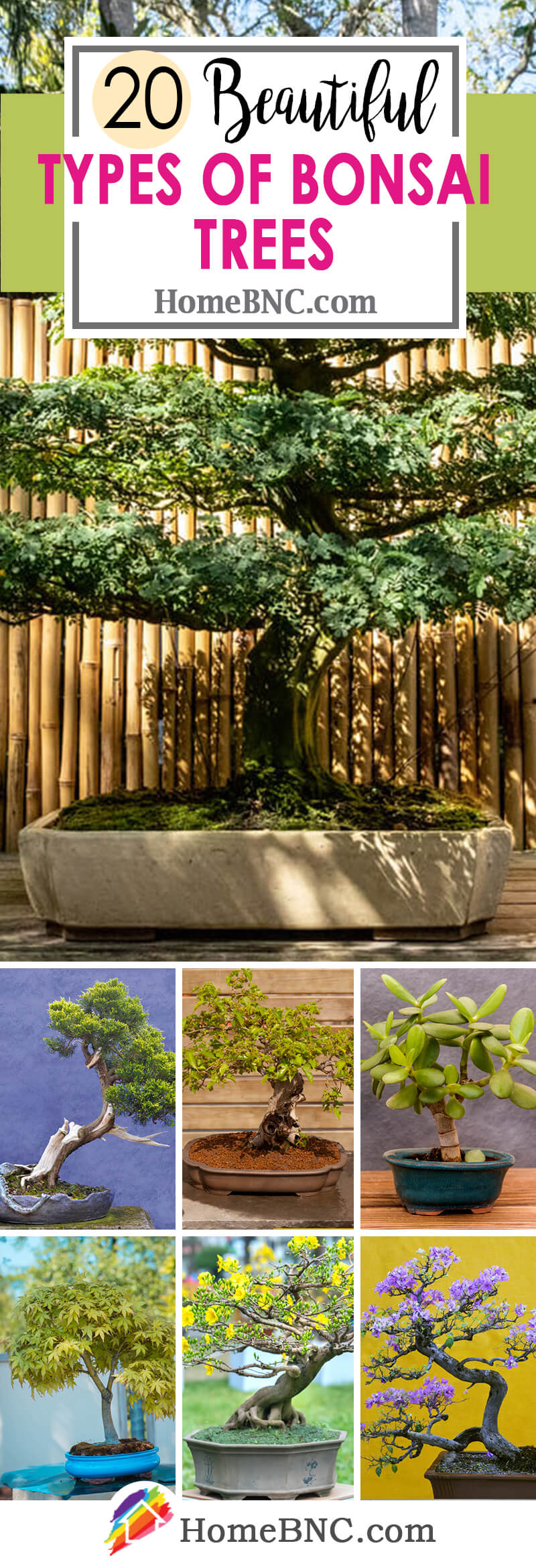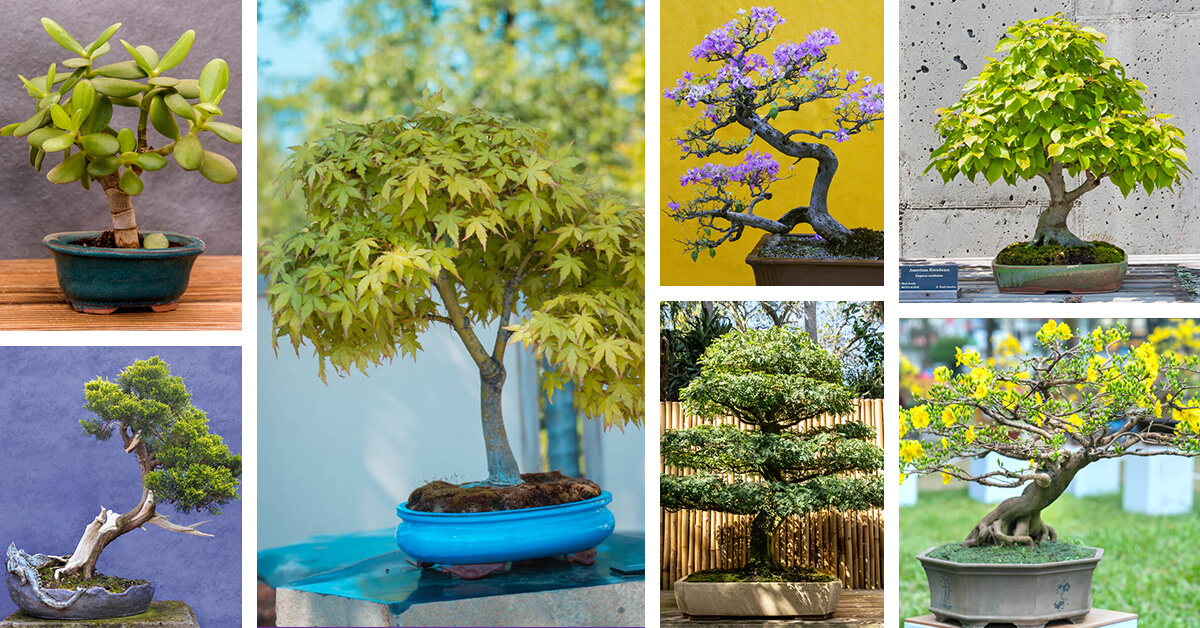Bonsai is a unique gardening style that involves growing miniature versions of trees and other plants, often while pruning them into captivating forms. However, many people are hesitant to take up bonsai gardening because they believe it is too difficult to do. As you’ll see later in this article, that is not always the case. Still, the joy you experience while growing a bonsai garden in your home will rely a lot on how well you can select a suitable species at the beginning of your journey. To help you get started, here are 20 of the top types of bonsai trees you can start growing today.
Key Takeaways
When you read through our list of the 20 best bonsai trees you can grow, you are sure to learn a lot about the topic. However, as you do that, be sure to look out for these key takeaways:
- Bonsai plants come in many different styles.
- Bonsai plants can grow indoors or outdoors, depending on your region.
- Bonsai is a gardening style that comes from China.
- Many bonsai plants have great flowers.
- Bonsai plants can be deciduous or evergreen.
There is plenty to explore within the world of bonsai plants, which is why knowing a few of the best options is often not enough. To help round out your knowledge on this topic, let’s look at a few of the most common questions that people have about bonsai trees and give each one a brief answer.
[wp-faq-schema title=”Frequently Asked Questions About Types of Bonsai Trees” accordion=1]20 Graceful Types of Bonsai Trees that Bring a Unique Beauty
1. Satsuki Azalea (Rhododendron indicum)
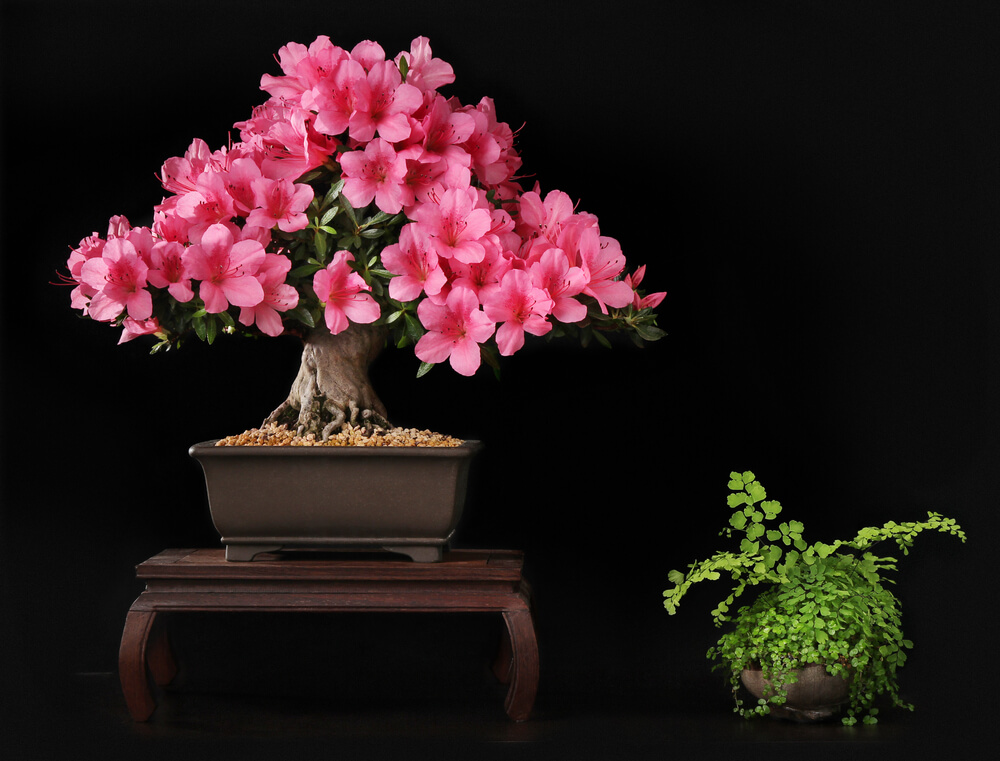
Thanks to the beautiful and recognizable flowers of azalea plants, it is not difficult to see why they are a popular option for outdoor plantings and bonsai alike. The Satsuki azalea is a particularly popular variety for bonsai, which covers its entire canopy with showy pink blooms during each spring season. During that time of year, if you want to keep your Satsuki azalea looking its best, you’ll need to water it a bit more often than you normally would. Otherwise, this bonsai tree will look great and be easy to care for overall.
2. Apple Tree Bonsai (Malus)
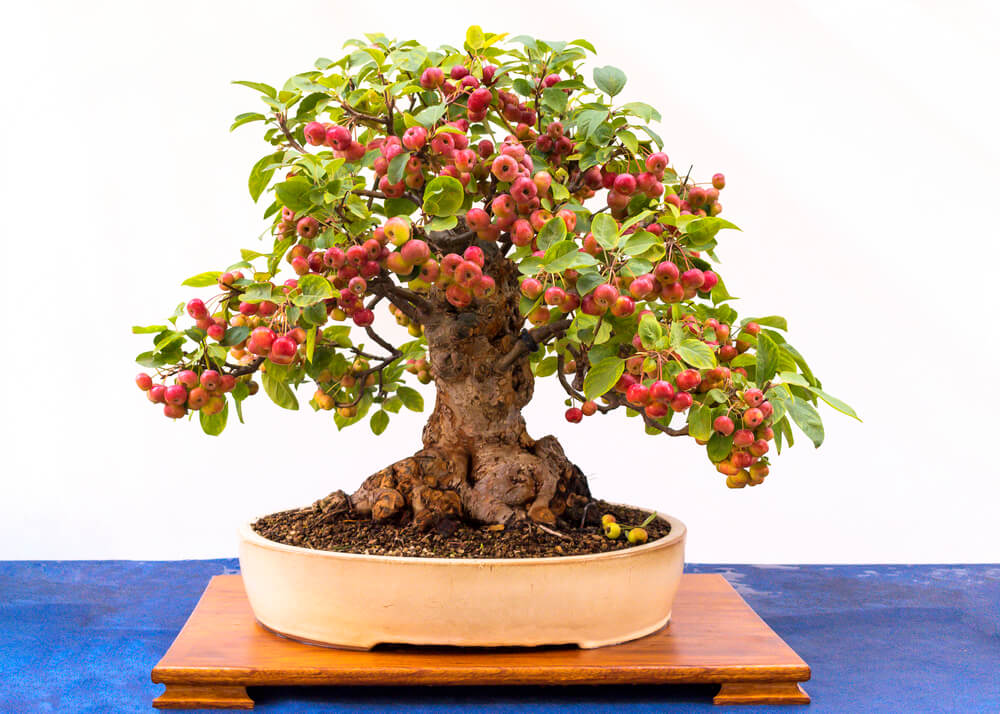
You’ll most often find apple trees growing outdoors in large orchards, which is why many people find it both intriguing and amusing that these plants make for great bonsai as well. The most amazing part is that an apple tree bonsai will present the same incredible flowers and fruits that a typical apple tree would. You’ll notice that we did not list a specific species for this list entry, and that is because there are several species in the Malus genus that are great for bonsai, including Malus sylvestris, Malus cerasifera, and Malus floribunda, to name a few.
3. Japanese Maple (Acer palmatum)

Since the term bonsai comes from Japanese, and the practice itself comes from nearby China, it seems quite fitting to practice your bonsai with a plant species that comes from that region of the world as well. The Japanese maple, or Acer palmatum, offers you the chance to do just that. The Japanese maple tree is known for its fantastic leaves, which often hold a dark red color throughout the growing season and also have an interesting, pointed shape. Japanese maples tend to have a pleasing growth habit when left to develop on their own, but that form can be even more impressive when you train this plant as a bonsai.
4. Juniper (Juniperus)
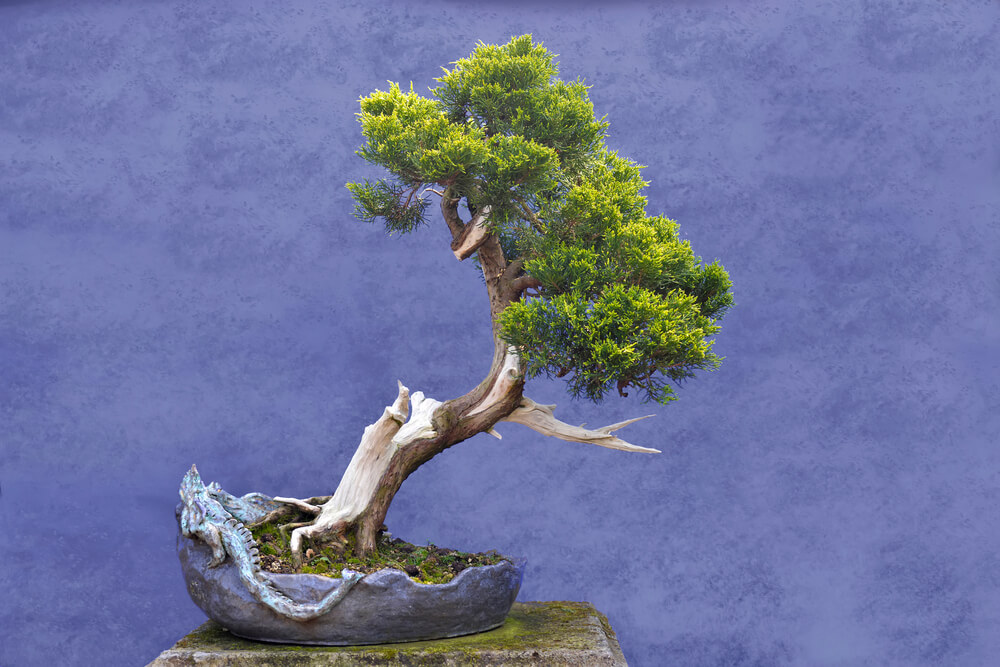
This list entry represents one of the most popular options for bonsai trees. Part of the reason for that popularity is that juniper plants have magnificent evergreen foliage. Those needled leaves create a great texture and can have a noticeable bluish-green color that stands out considerably compared to plants with more typical green foliage. The stems and branches provide plenty of ornamental value as well, thanks to their ability to grow in wild wave-like patterns and the striking light gray bark that covers them. Those visual traits have made juniper plants a classic bonsai option for many years, and there are multiple varieties you can choose from.
5. Olive Tree (Olea europaea)
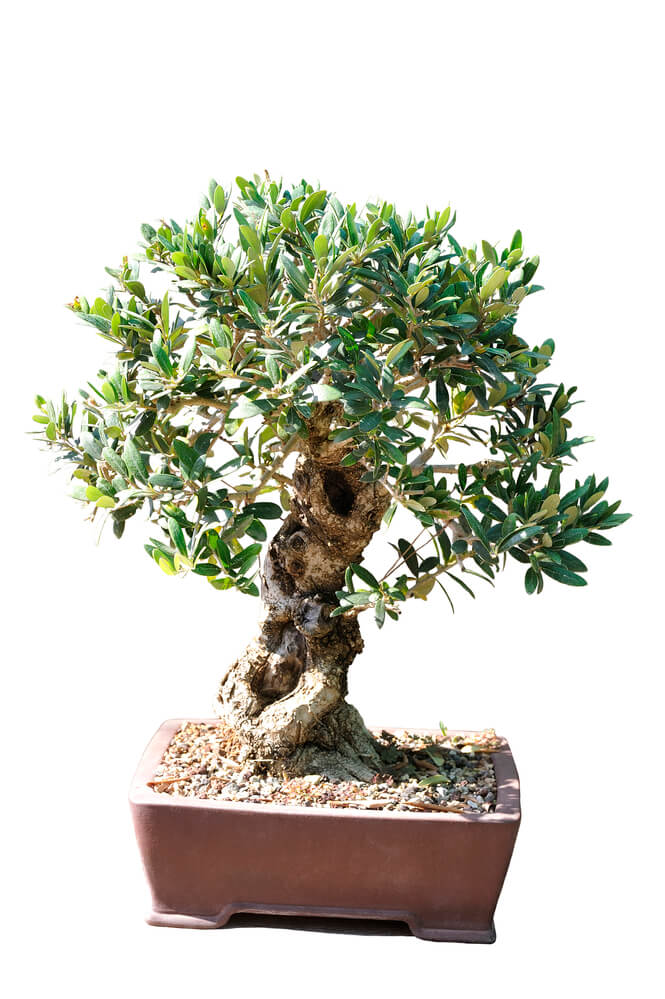
An olive tree bonsai grows with a single sturdy main trunk and a canopy that creates an overall rounded form. That canopy consists of many small, oval-shaped leaves, each of which provides a lovely color contrast. The top of each leaf is a rich dark green, while the undersides stand out as relatively pale in comparison. Of course, with the right care, your olive tree bonsai will also produce a set of olives as its fruits. Those fruits add to the aesthetic appeal of this plant and can be a tasty treat for those who enjoy them as well.
6. Japanese White Pine Tree (Pinus parviflora)
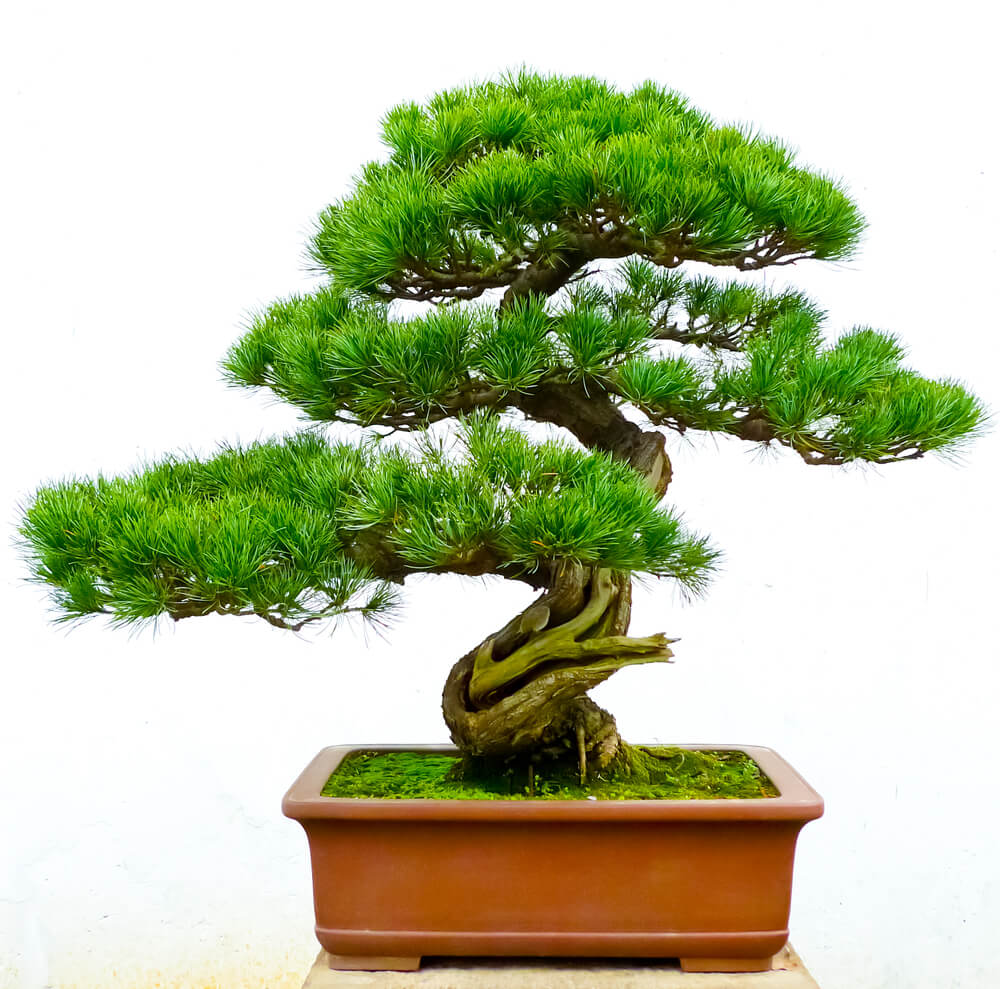
Pine trees are another excellent needled evergreen option that you can grow as bonsai. This variety, the Japanese white pine tree, is especially common as a bonsai option. When mature, a Japanese white pine bonsai tree often develops dense layers of foliage that grow in a tier-like fashion. The trunk of this tree can also form a twisting habit that is sure to catch your eye as well. Achieving that look requires plenty of pruning and maintenance, as is true for many bonsai plants, but all of that work is well worth it in the end.
7.Chinese Elm (Ulmus parvifolia)
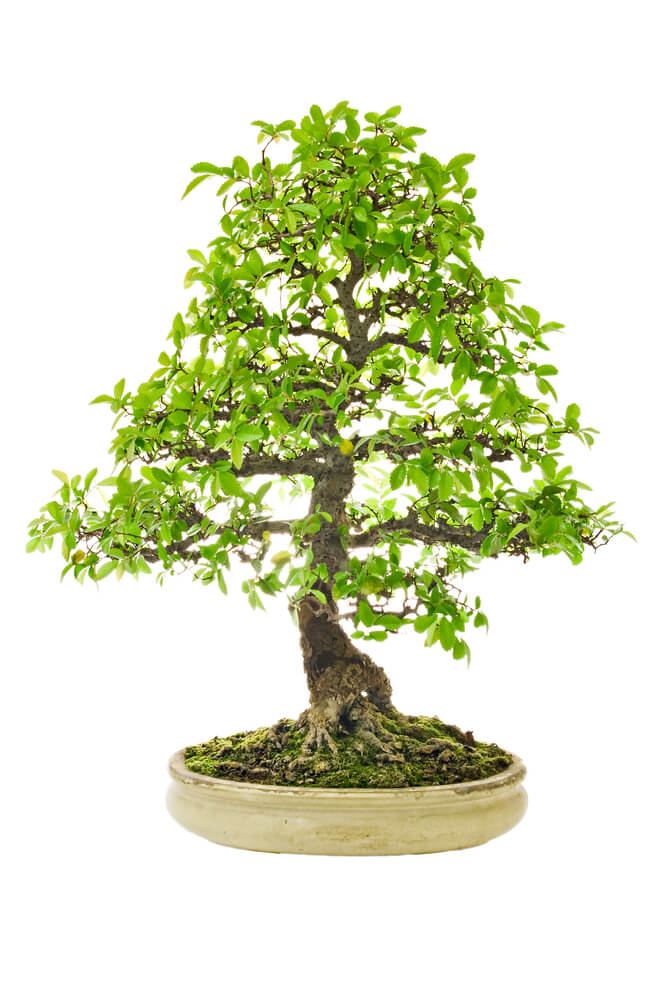
Many bonsai plants grow to create intricate and complex forms and patterns with their stems, branches, and foliage. But not every lover of bonsai is looking for an opportunity to create such wild and irregular shapes. Fortunately for those gardeners, there are plenty of bonsai trees that naturally develop neater forms, and the Chinese elm tree is a perfect example of that. The Chinese elm tree bonsai tends to grow with a loose pyramidal shape that is easy to maintain and keep neat if that is your desire. Additionally, the Chinese elm is a bonsai option that many people can grow either indoors or outside.
8.Apricot Bonsai (Prunus mume)
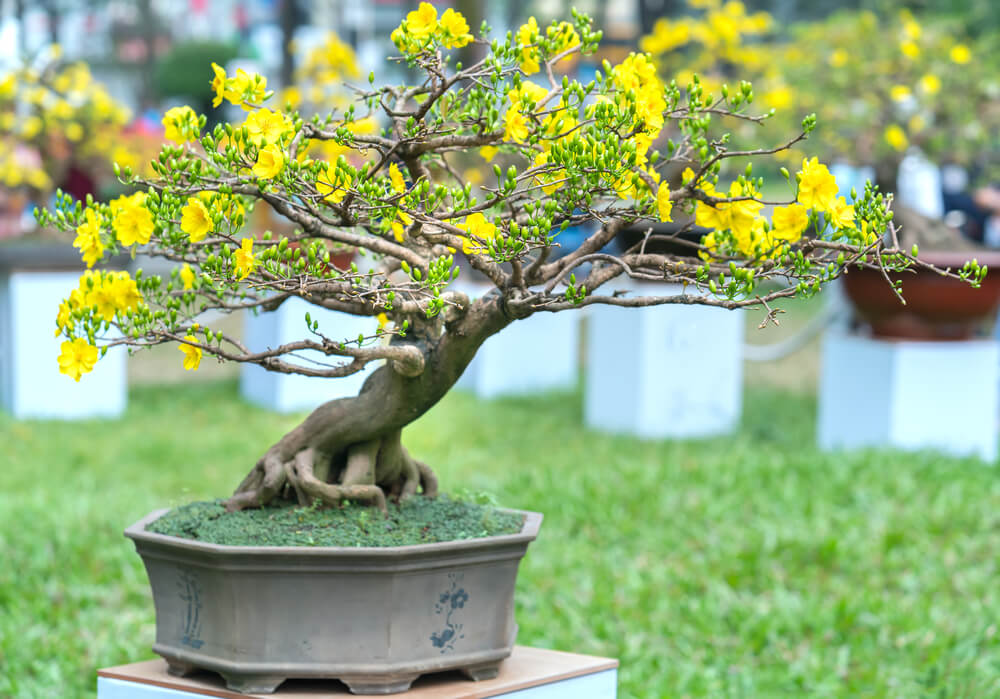
Many people find great joy in growing fruit trees because these trees not only provide a delicious harvest but also tend to look astoundingly beautiful when they are in bloom. This combination of function and beauty is difficult for other plant options to beat. If you are looking for a bonsai plant that will give you a valuable set of flowers and fruits, then an apricot tree bonsai should be one of your first picks. This tree blooms with vibrant flowers that turn the entire plant yellow before eventually giving way to a group of apricot fruits.
9.Japanese Larch Bonsai (Larix leptolepis)
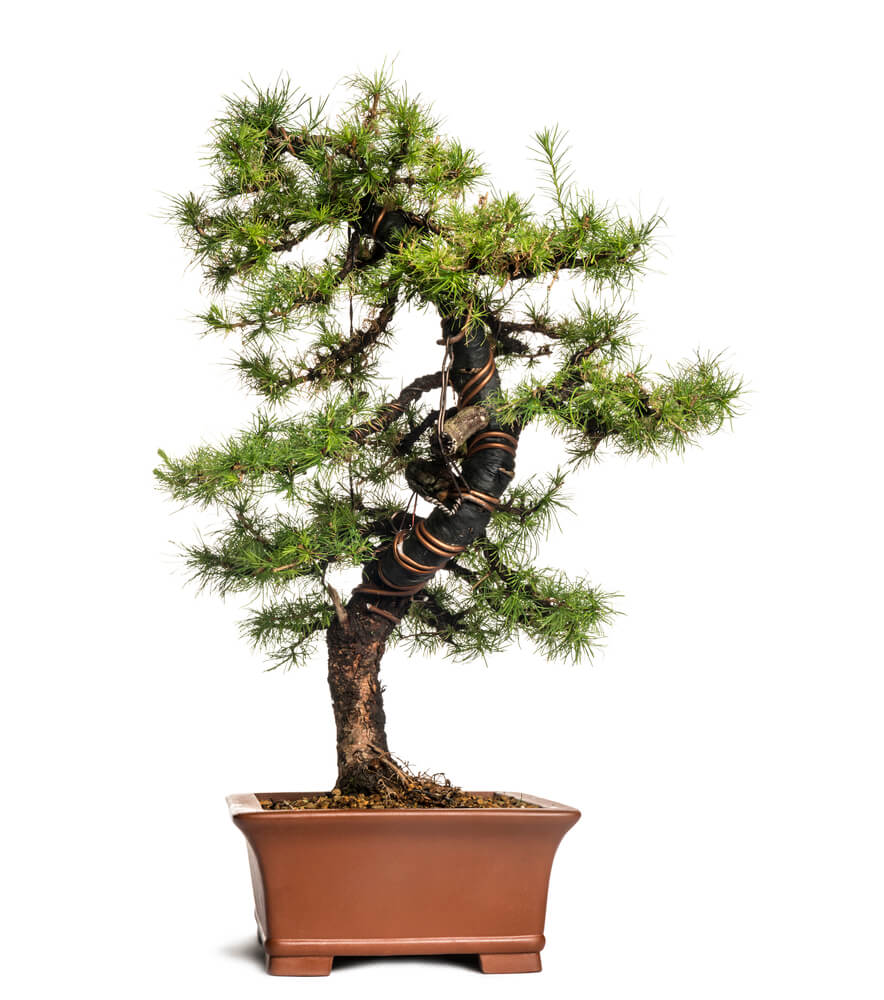
It is safe to say that most bonsai plants stand out as being unique for one reason or another. However, the Japanese larch is a species that is especially unique compared to the rest of the plant world. This tree has needled foliage, but unlike almost every other plant that has needles, larches are not evergreen. Instead, your Japanese larch tree bonsai will allow its needles to fade to a brilliant gold color every fall. That foliage is equally capable of providing textured greenery throughout the rest of the growing season too.
10.Ficus Bonsai (Ficus retusa)

For some, the purpose of growing a bonsai plant indoors is mainly a reliable way of adding a touch of green that will persist all year long. If that is a goal for you, then a Ficus bonsai tree could be a perfect choice. The Ficus bonsai has broad evergreen leaves that are relatively large. Those leaves have an almost perfect oval shape and tend to have a glossy surface that only makes them look even better. Another reason to grow this bonsai plant is its trunk, which tends to develop strange, bulbous forms that many people find attractive.
11.Desert Rose Bonsai (Adenium obesum)
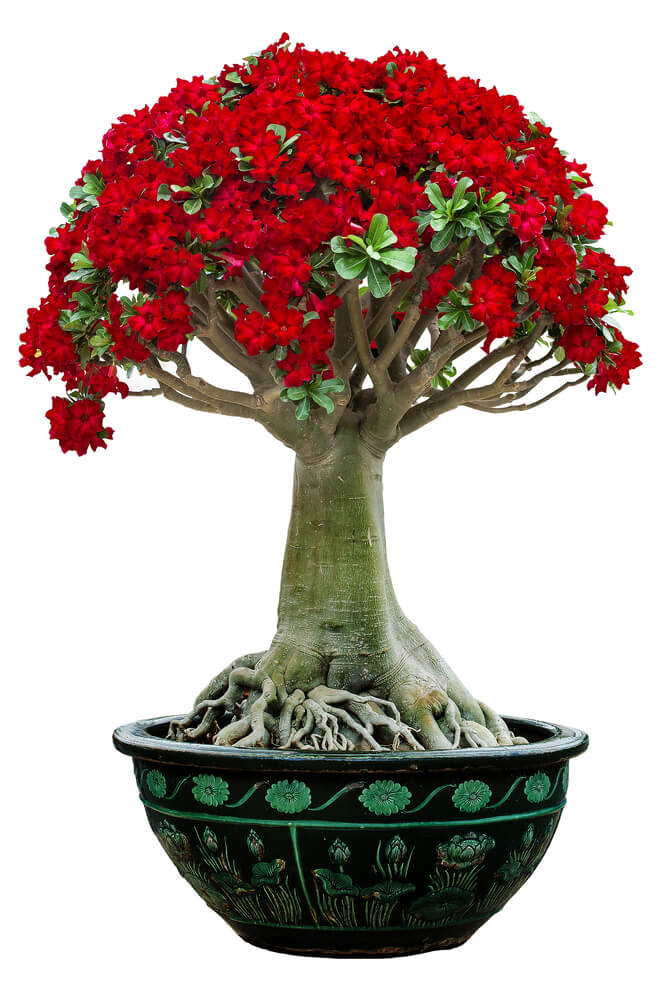
For gardeners who want their bonsai to give them plenty of colors and a taste of the desert landscape, the desert rose is a plant that they should own. This single option is so attractive that it will make you wonder how such a small plant can make such a large visual impact. As is true of many other plants on this list, the desert rose bonsai comes in many different varieties. Each of those varieties offers blooms of varying color patterns. Some are pure red, others are pink, and others have flowers that feature multiple colors at once.
12.Banyan Bonsai (Ficus benghalensis)

We should not take for granted how amazing the art of bonsai is, considering many bonsai plant species are capable of growing to immense mature sizes. In this regard, there is no better example than the banyan bonsai tree. When growing outdoors in the wild, a banyan tree earns recognition as one of the largest types of trees in the world. However, through the practice of bonsai, you can grow this would-be giant in a small pot. The banyan bonsai also comes with its famous growth habit that includes the roots sending new trunks into the air that connect to the existing branches above.
13.Mulberry Bonsai (Morus alba)
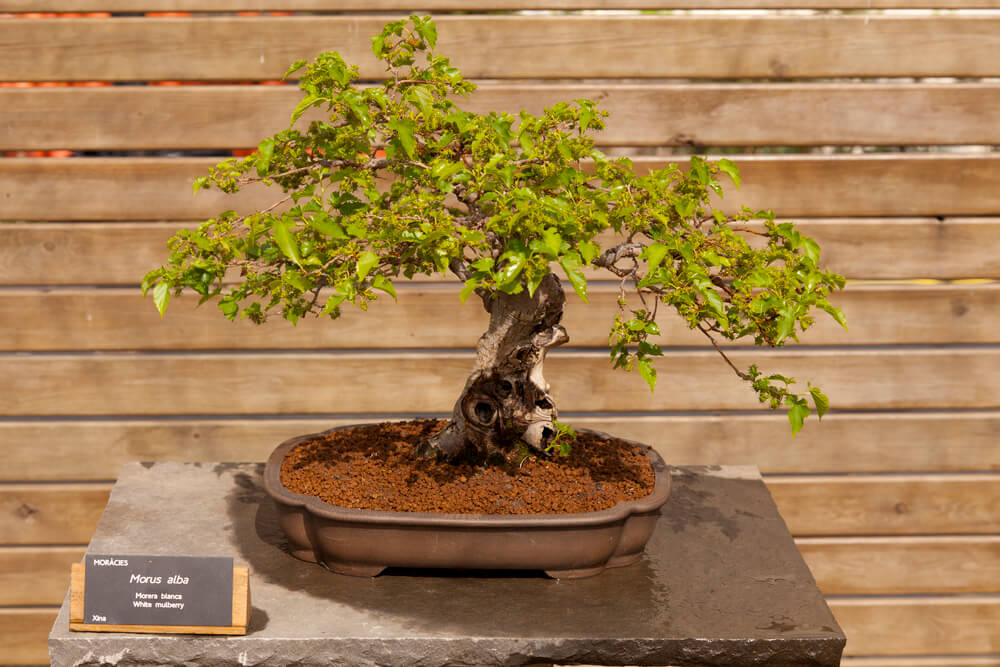
Many bonsai trees don’t look very much like a typical tree when all is said and done. But that is not the case for the mulberry bonsai. This plant looks just like a traditional tree in miniature form with a prominent trunk and an extensive branching habit. Those branches hold rich green leaves that have jagged margins. Along the branches, you’ll also find the mulberry bonsai’s fruit when the season is right. Thanks to those awesome features, the mulberry bonsai tree is a suitable option whether you are a bonsai expert or not.
14.Jade Bonsai (Crassula ovata)
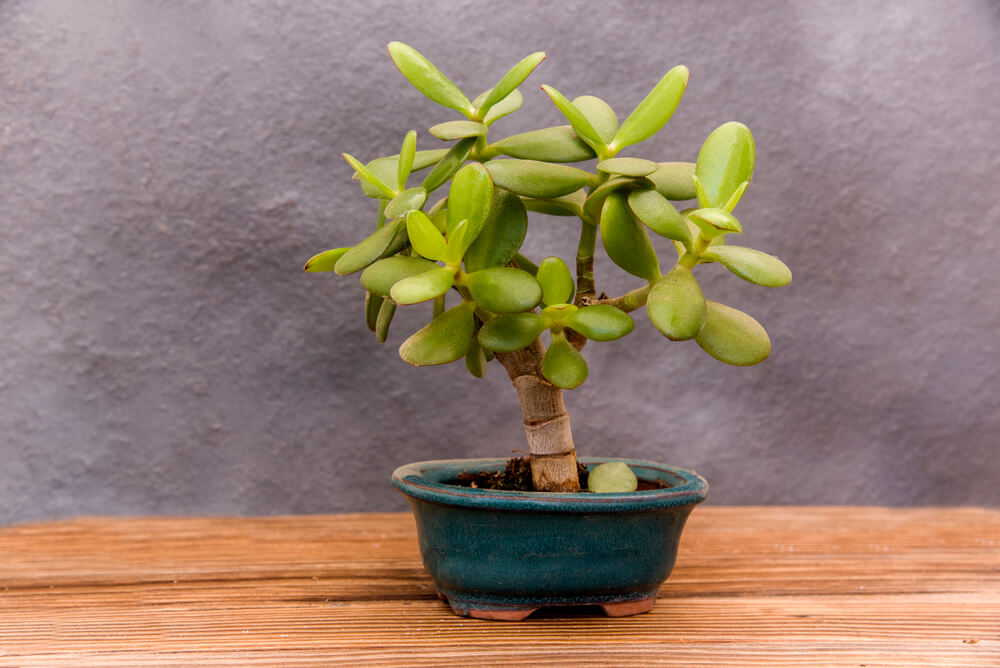
A jade bonsai tree is a classic option that you’ll be able to recognize right away. Overall, jade bonsai plants tend to have a simpler growth habit than other standard bonsai options. That form often includes one main stem that can be dead straight or showcase a few graceful bends. The leaves of this plant are also easy to notice. They are relatively large compared to the overall size of the plant, and they are remarkably thick and fleshy. In fact, those thick, shiny leaves are enough reason for any indoor gardening enthusiast to grow this plant in their home.
15.European Beech Bonsai (Fagus sylvatica)
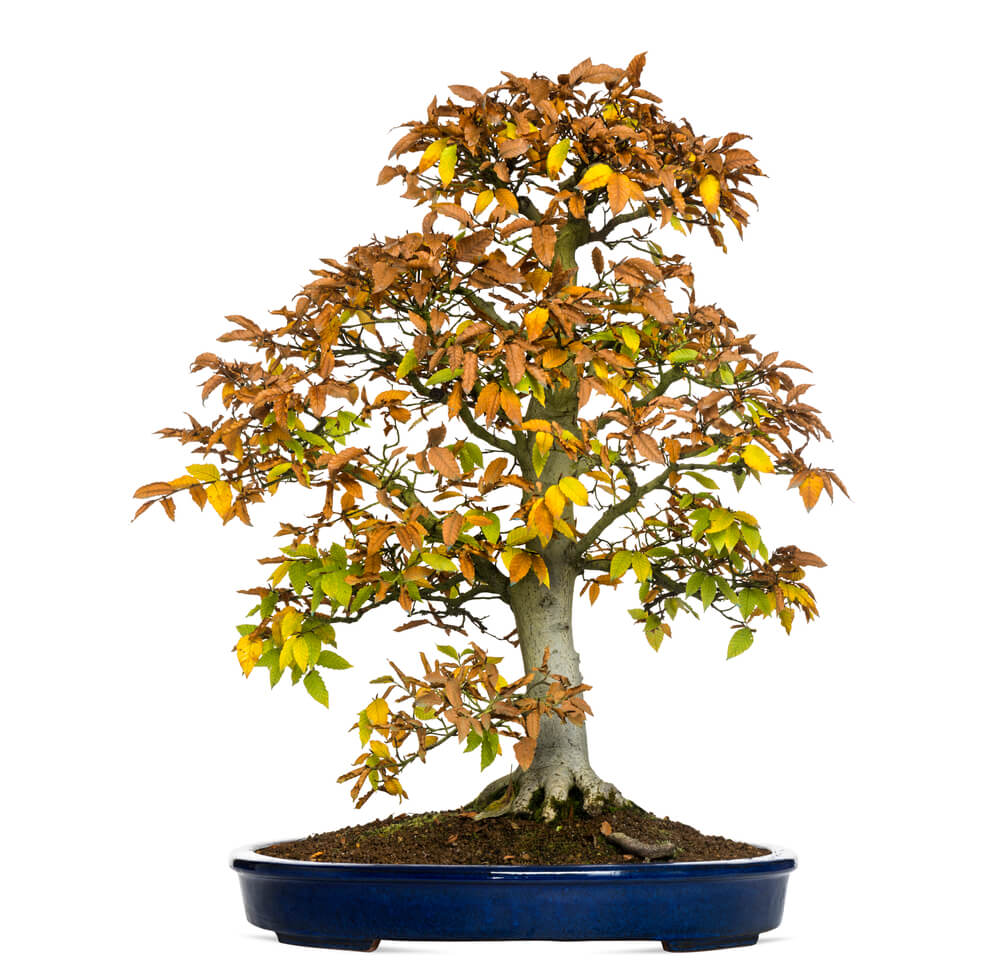
We’ve already noted that, despite being able to stay small, many bonsai plant species are capable of growing to great heights outdoors. Such is true for this list entry. In outdoor settings, a European beech tree can be over 100 feet tall. But even though the bonsai version is much smaller, it remains just as impressive. A European beech bonsai will have light grey bark that is very smooth. This tree also offers some of the best fall colors of any bonsai option as it turns its foliage shades of yellow, orange, and red.
16.Guiana Chestnut Bonsai (Pachira aquatica)
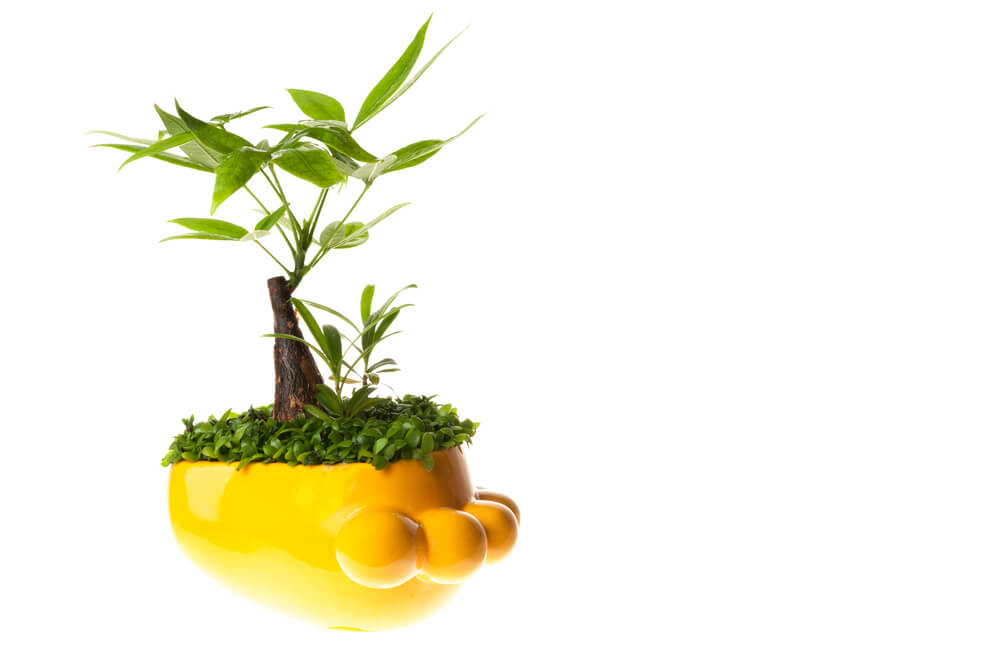
At times, some parts of the Guiana chestnut bonsai tree can look somewhat out of scale, but that is part of what gives this plant its charm. For instance, some Guiana chestnut bonsais develop with a very narrow trunk. That trunk looks even more slender when you compare it to this plant’s elongated leaves, which themselves look a bit too large for the plant. Still, despite those sizing oddities, the Guiana chestnut bonsai remains very attractive. This plant can take that attractiveness to a new level if you train its trunk to have a braided pattern, as many bonsai gardeners do.
17.Bougainvillea Bonsai (Bougainvillea spectabilis)
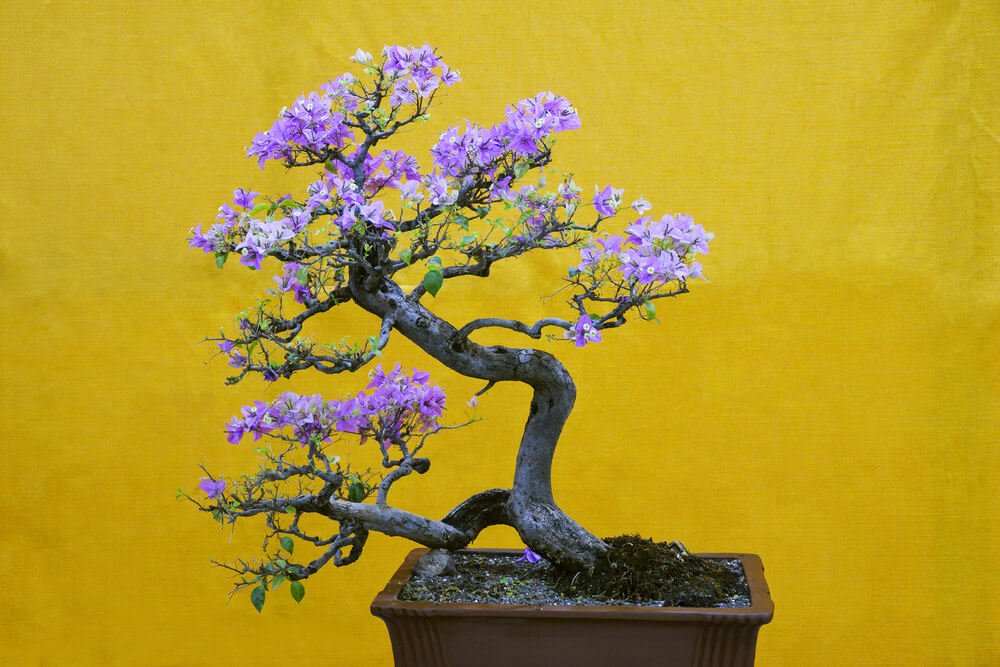
It is difficult to select a single bonsai that has the best flowers, but with that said, it is also difficult to argue against the idea that the bougainvillea bonsai should earn the top spot in that category. This bonsai plant blooms so copiously that the effect of its bloom period can be truly breathtaking. The bougainvillea bonsai plant can have different flower colors, including magenta and orange, but purple is the most common. However, regardless of which color your bougainvillea bonsai has, you can be sure to see it in high volume when the flowers open.
18.Downy Birch Bonsai (Betula pubescens)

Birch trees are a favorite plant for many gardeners, whether they grow as bonsai or not. One of the main features that make a birch tree so coveted is its bark. As is the case for many birches, the downy birch bonsai has large patches of white on its trunk and branches.
Meanwhile, large dark fissures form throughout the white areas. Another reason the downy birch is so lovely has to do with its growth habit. At times, the canopy of this tree can have a weeping habit. Those thin drooping branches also hold leaves that can turn yellow in the fall.
19.Brazilian Rain Tree Bonsai (Pithecellobium tortum)
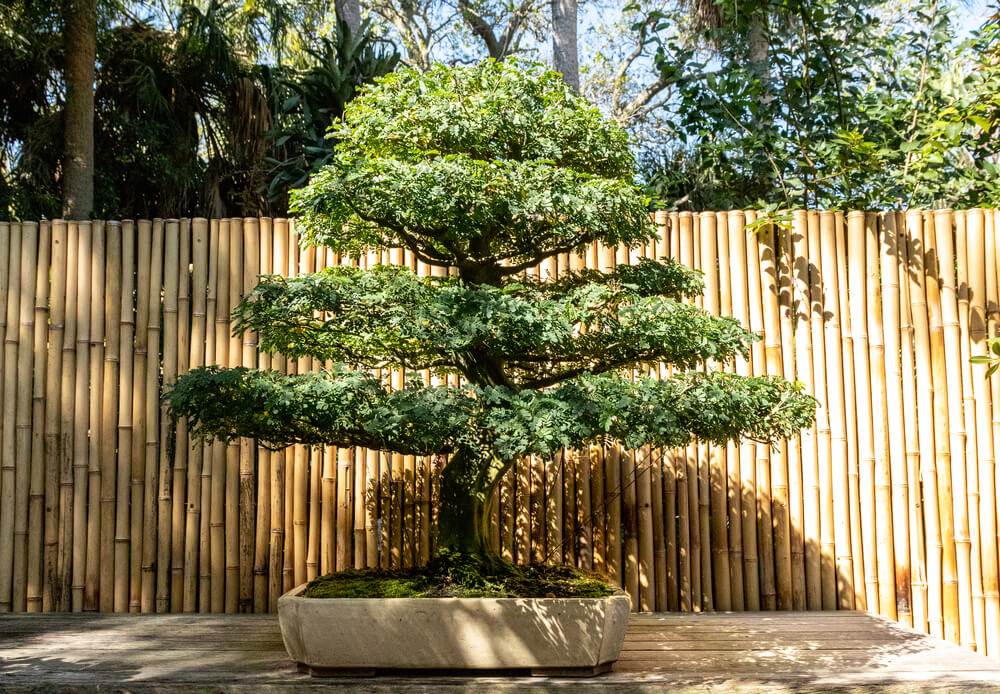
We already mentioned another bonsai option on this list that truly grows like a tiny tree. However, the Brazilian raintree bonsai may have an even more perfect miniature tree form. The Brazilian raintree tends to have one main trunk and a canopy that spreads a lot, as a large shade tree would. Throughout the canopy are many tiny green leaflets that make for a very lush appearance. Grow this plant indoors but make sure that it has plenty of sun exposure, and it will give your living space a hint of the Brazilian tropical rainforest.
20.Cedar Bonsai (Cedrus libani)
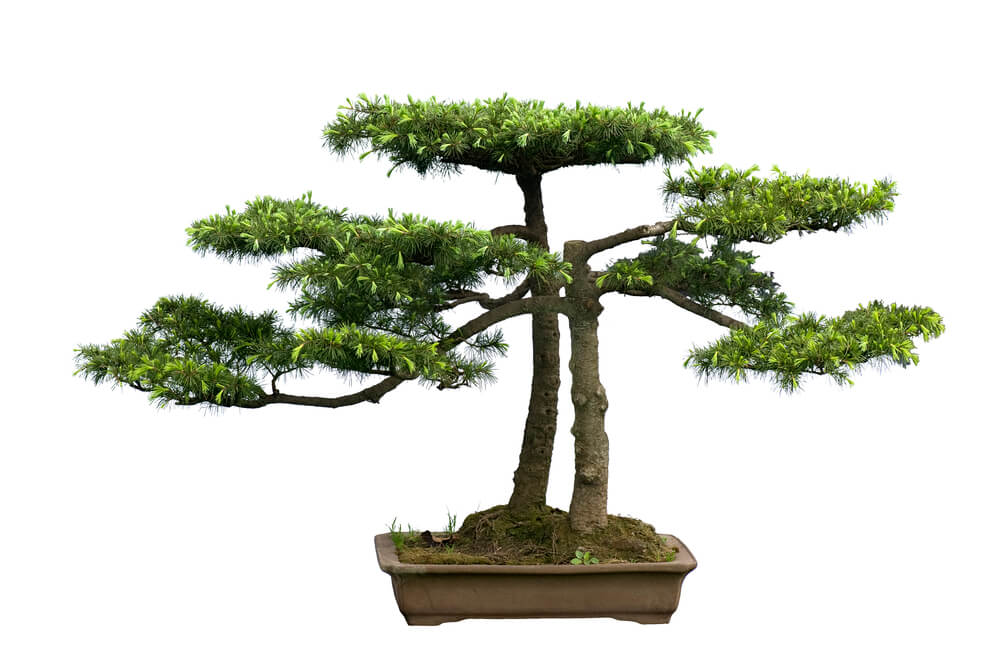
Last but not least, the cedar bonsai tree is another classic evergreen bonsai selection that you would be wise to try. What makes this tree stand out is that its growth habit tends to be very straight. While other bonsai trees have wild twisting forms, the cedar bonsai tends to have a rigid trunk that is almost perfectly vertical. Atop that vertical trunk is an open triangular canopy that holds many small needles that coalesce to create a very fine texture. At times, those needles can also show hints of blue rather than entirely green.
20 Beautiful Types of Bonsai Trees You’ll Love Growing
After reading this article, you not only know about 20 of the greatest types of bonsai trees around, but you also have some key knowledge about this topic as a whole as well. In fact, the lessons you picked up here are enough to get you started in bonsai gardening today. If you do, it won’t be long before your home is full of magnificent bonsai plants of all shapes and varieties. Just remember that bonsai gardening is all about selecting the ideal plant for you. So, if you are struggling to pick which bonsai species to grow next, refer to the list above for some inspiration.
